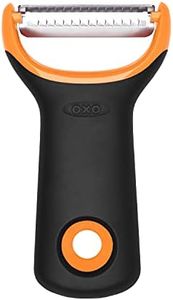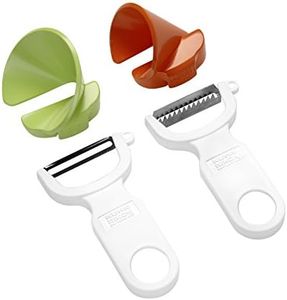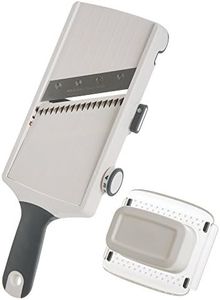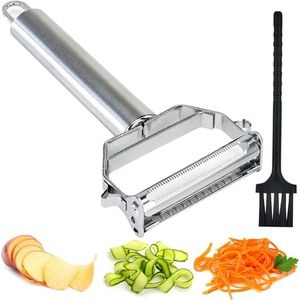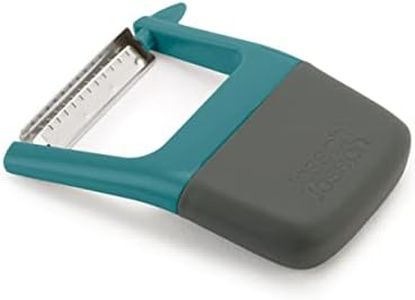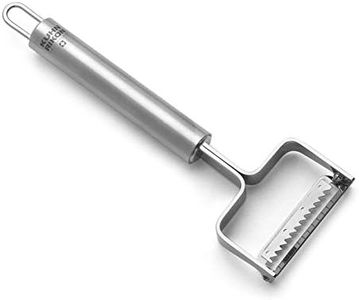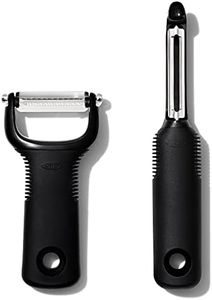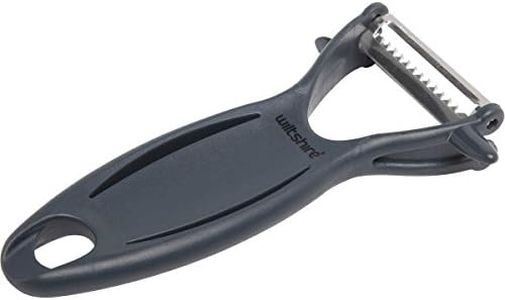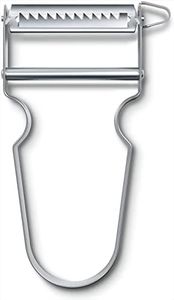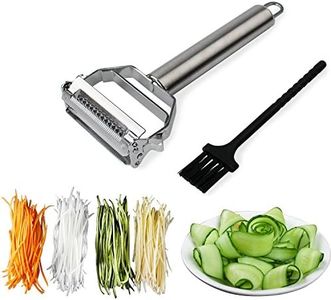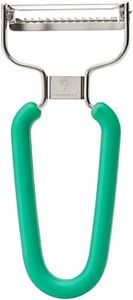We Use CookiesWe use cookies to enhance the security, performance,
functionality and for analytical and promotional activities. By continuing to browse this site you
are agreeing to our privacy policy
10 Best Julienne Peelers
From leading brands and best sellers available on the web.By clicking on a link to a third party's website, log data is shared with that third party.
#1
Winner
Buying Guide for the Best Julienne Peelers
Choosing a julienne peeler can seem straightforward, but finding the right one for your needs involves understanding a few key features. A julienne peeler is designed to quickly and easily cut vegetables or fruits into thin, matchstick strips—a must-have for salads, garnishes, or stir-fries. When shopping, it's important to look past just appearance, and focus on features that boost performance, ease of use, and safety. By understanding these aspects, you'll be able to select a peeler that matches your cooking style and comfort level.Blade MaterialThe blade is the heart of any julienne peeler, usually made from stainless steel or sometimes ceramic. Stainless steel blades are most common because they're sharp, durable, and resistant to rust. Ceramic blades can stay sharp longer, but they tend to be more brittle and can chip if dropped. If you want a blade that handles tough veggies like carrots or sweet potatoes, opt for a strong stainless-steel version. For mostly softer produce and a lighter peeler, ceramic could be enough—but be aware of its potential fragility.
Blade Sharpness and DesignSharpness affects how cleanly the peeler will cut through vegetables. A sharp blade saves you effort and creates neater strips, so it's important for both safety and good results. Some blades are straight while others are serrated. Straight blades work best for harder vegetables and more uniform cuts, while serrated ones can help grip slippery or softer foods. Choose a blade design based on what you often peel—if you love prepping carrots and zucchini, sharp straight blades are great; if you use a lot of soft or slippery foods, a serrated blade may be helpful.
Handle ErgonomicsThe way a peeler feels in your hand can affect how long you can use it comfortably and how much control you have. Handles can be slim, thick, soft-grip, or hard plastic. Thick, cushioned handles are good for anyone with joint pain or a weak grip because they're easier to hold and exert less pressure on your hand. Slimmer or hard handles can work for short tasks or if you already have a strong grip. Pick a handle design that feels good in your hand and is comfortable for you to use for the amount of peeling you expect to do.
Ease of CleaningPeeling vegetables can get messy, and cleaning the tool is important. Some julienne peelers can go in the dishwasher, while others are only meant for hand washing. Those with lots of small nooks or attachments may take more time to clean by hand. If you like convenience, look for dishwasher-safe models or simple designs with fewer crevices. If you're okay with hand washing and want more features, a more complex design might be acceptable.
Safety FeaturesBecause julienne peelers are sharp and expose blades, safety features can make a difference, especially for beginners. Some models have protective covers for the blade or non-slip grips on the handle. Others may have finger guards to keep your hands safe. If you’re concerned about accidents or have children helping in the kitchen, look for peelers with these types of safety elements.
Size of Julienne StripsThe thickness of the strips a peeler produces can vary. Some peelers make thin, delicate strips perfect for salads or garnish, while others create wider strips suitable for stir fries or zoodles. Think about what dishes you’ll make most often—if you want fine strips for salads, choose a peeler that mentions fine or thin cuts; if you plan to use strips in cooked dishes or want something more robust, a peeler with a wider cut may suit you better.
